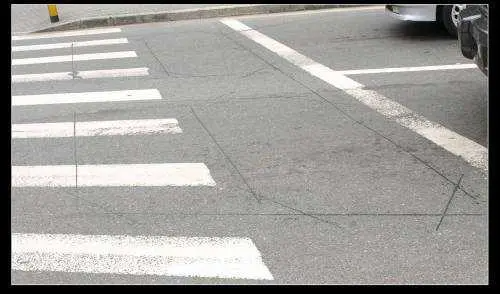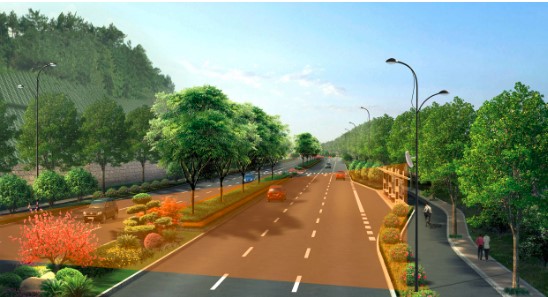Detailed Introduction to the Application Technology of Microwave Radar in Intelligent Transportation
1、 Introduction
Real time traffic information is one of the fundamental sources of information for Intelligent Transportation Systems (ITS). Only by accurately grasping the real-time traffic conditions of each road section can ITS effectively execute and utilize its various functions, such as traffic guidance. Therefore, real-time detection technology for traffic information is the most core and fundamental part of the ITS technology system.
The research on traffic information collection technology has undergone many years of development. At present, various traffic information collection technologies have been applied in practice. These technologies can collect various traffic information including lane traffic flow, lane occupancy rate, vehicle speed, vehicle type, and distance between front and rear vehicles. Having accurate real-time speed data enables automatic capture of speeding behavior.

The earliest developed traffic information collection technology was contact based, with the most representative being the circular coil detection technology. Such devices are usually buried under the road surface, and when vehicles pass by, they generate corresponding changes in pressure, electric or magnetic fields. The device converts these changes in physical quantities into the required traffic information. After years of development, contact based traffic information collection technology has become quite mature, with high measurement accuracy and easy operation, and has long been the mainstream technology in the field of traffic information collection. However, contact devices also have some inevitable drawbacks: firstly, installation and maintenance are relatively complex, requiring interruption of traffic and damage to the road surface; Secondly, with the increase in the number of vehicles, the road load increases, leading to a shortened service life of such devices; In addition, in recent years, the rapid expansion of road construction has had a serious impact on the use of contact devices due to road conditions in different environments, such as roadbed subsidence, salinization, and freezing. In addition, in special environments such as tunnels and bridges, destructive installation methods add a lot of difficulty and inconvenience, which together push up the cost of use.

The recently emerging non-contact traffic information collection devices have overcome the above shortcomings and are mainly divided into two categories: microwave detection and video detection. Due to its easy installation and maintenance, non-contact traffic information collection technology has developed rapidly. Video detection technology relies on the background grayscale changes caused by vehicles entering the detection area (known as the “virtual coil”) for detection. This method is intuitive and reliable, but it is easily affected by lighting and climate conditions, and requires regular maintenance such as lens cleaning. In contrast, microwave detection technology utilizes the changes in electromagnetic wave return time and frequency when vehicles pass through the detection area for detection, which has the advantages of convenient installation and maintenance, long service life, and almost no influence from weather conditions such as light, dust, wind, rain, fog, and snow.
2、 Traffic information detection and speeding capture technology based on microwave radar
The key to applying microwave radar technology to traffic information collection is to extract relevant vehicle information from radar echo signals. In short, it is necessary to use the speed and distance measurement functions of microwave radar to achieve real-time monitoring of traffic information.
a. Speed detection
Microwave radar measures the velocity of moving objects based on the Doppler effect. When microwaves encounter obstacles, they will reflect, and the frequency and amplitude of the reflected wave will change with the motion state of the obstacle. If the obstacle remains stationary, the frequency of the reflected wave remains unchanged; If an object moves towards the radar, the frequency of the reflected wave will increase; On the contrary, if an object moves away from the radar, the frequency of the reflected wave will decrease. This is the basic principle of the Doppler effect, and the velocity measurement technology based on this principle has extremely high accuracy.
b. Vehicle flow detection
In addition to Doppler effect, microwave radar also has ranging function. By measuring the distance between the vehicle and the radar, the lane in which the vehicle is located can be determined. The presence or absence of vehicles in the same lane can lead to significant differences in the strength of echo signals, thereby determining the presence of vehicles. By combining speed and location information, real-time vehicle information within multiple lanes can be obtained simultaneously, even in situations of traffic congestion or vehicle stoppage.
Radar using Frequency Modular Continuous Wave (FMCW) system can effectively achieve ranging function. FMCW radar emits a series of continuous frequency modulated waves through an antenna and receives reflected signals. The frequency of the transmitted signal varies according to a certain pattern (usually a triangular wave or sawtooth wave) over time. The frequency difference between the transmitted signal and the reflected signal generates an intermediate frequency signal (IF) output through frequency mixing, which is proportional to the distance from the radar to the obstacle. Due to the different distances between vehicles on different lanes and the radar transmission point, the frequency of the generated IF signal will also vary, so it is possible to detect vehicles on multiple lanes simultaneously.
c. Detection of other traffic information parameters
In addition to traffic flow and speed, microwave radar can also detect parameters such as vehicle type, lane occupancy rate, and headway. Although different types of vehicles have different microwave reflection cross-sections, simple microwave technology is difficult to accurately classify vehicle types due to the influence of various factors such as shape, size, and material on the reflection cross-section. However, by measuring the time required for vehicles to pass through the detection area and combining it with known speeds, the length of the vehicle can be calculated, thereby achieving length based vehicle classification (such as long vehicles, medium long vehicles, short vehicles, etc.). If more accurate vehicle identification is required, vehicle contour diagnosis technology is needed, but this will significantly increase costs. For most intelligent transportation system (ITS) applications, length based vehicle classification is sufficient.
The lane occupancy rate and headway can be calculated by monitoring the time it takes for vehicles to enter and leave the microwave radar monitoring area. For side mounted radars, these two time points are difficult to measure accurately because different detection sensitivities can lead to different measurement results, so they can only be used as references. However, the front mounted radar can measure these parameters very accurately.
In summary, the application of microwave radar technology in traffic information detection is not limited to measuring speed and flow, but also includes information collection in various aspects such as vehicle recognition, lane occupancy, and headway. These pieces of information are crucial for the efficient operation of intelligent transportation systems.
